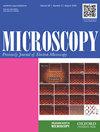Three-dimensional culture of a pancreatic cancer cell line, SUIT-58, with air exposure can reflect the intrinsic features of the original tumor through electron microscopy
IF 1.8
4区 工程技术
引用次数: 1
Abstract
Mini-abstract: Application of a three-dimensional culture system with air exposure facilitates the formation of large cell spheres possessing cribriform glands and producing mucin in the collagen gel. Transmission electron microscopy revealed the formation of microvilli and junctional complexes at the apical side of the cell. This study aimed to reproduce the characteristics of original adenocarcinoma tumors in vitro. The pancreatic cell line, SUIT-58, derived from a moderately differentiated adenocarcinoma of metastatic pancreatic cancer was used. The cells have a sheet structure in conventional cell culture without forming glands or exhibiting mucin production in the lumen. First, the necessity of scaffolds to create an adenocarcinoma-like microenvironment for SUIT-58 pancreatic cancer cells was assessed. Compared with conventional culture plates, the use of type I collagen as a scaffold played an important role in the formation of densely congested microvilli, as observed through scanning electron microscopy. As gland formation is one of the features of adenocarcinoma, we also assessed gland formation. Use of a recently developed three-dimensional culture system with air exposure resulted in the formation of large cell spheres possessing cribriform glands, which released mucin into the lumen. Transmission electron microscopy also revealed the formation of microvilli in the lumen of the glands and junctional complex at the intercellular part, which were similar to those observed in xenografts. These findings indicate that an in vitro three-dimensional culture system with air exposure reflects the intrinsic features of the original tumor, suggesting that this culture system could be useful for preliminary research of certain cancers.暴露在空气中的胰腺癌症细胞系SUITE-58的三维培养可以通过电子显微镜反映原始肿瘤的内在特征
摘要:应用暴露在空气中的三维培养系统有助于形成具有筛状腺的大细胞球,并在胶原凝胶中产生粘蛋白。透射电子显微镜显示细胞顶端形成微绒毛和连接复合体。本研究旨在体外再现原发性腺癌肿瘤的特征。使用来源于转移性癌症的中分化腺癌的胰腺细胞系SUI-58。在常规细胞培养中,细胞具有片状结构,而在管腔中不形成腺体或表现出粘蛋白产生。首先,评估了支架为SUITE-58胰腺癌症细胞创建腺癌样微环境的必要性。通过扫描电子显微镜观察到,与传统培养板相比,使用I型胶原作为支架在密集充血微绒毛的形成中发挥了重要作用。由于腺体形成是腺癌的特征之一,我们也评估了腺体的形成。使用最近开发的暴露在空气中的三维培养系统可以形成具有筛状腺的大细胞球,从而将粘蛋白释放到管腔中。透射电子显微镜还显示,腺体内腔中形成了微绒毛,细胞间部分形成了连接复合体,这与异种移植物中观察到的类似。这些发现表明,暴露在空气中的体外三维培养系统反映了原始肿瘤的内在特征,表明该培养系统可用于某些癌症的初步研究。
本文章由计算机程序翻译,如有差异,请以英文原文为准。
求助全文
约1分钟内获得全文
求助全文
来源期刊

Microscopy
工程技术-显微镜技术
自引率
11.10%
发文量
0
审稿时长
>12 weeks
期刊介绍:
Microscopy, previously Journal of Electron Microscopy, promotes research combined with any type of microscopy techniques, applied in life and material sciences. Microscopy is the official journal of the Japanese Society of Microscopy.
 求助内容:
求助内容: 应助结果提醒方式:
应助结果提醒方式:


